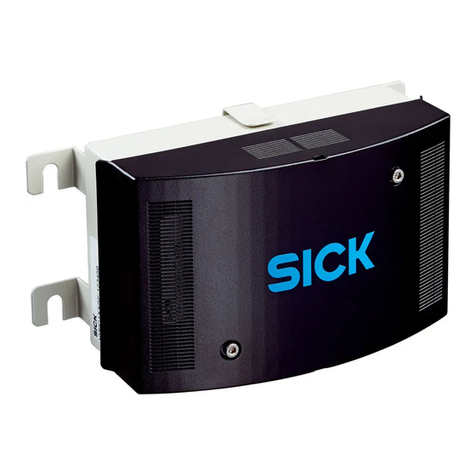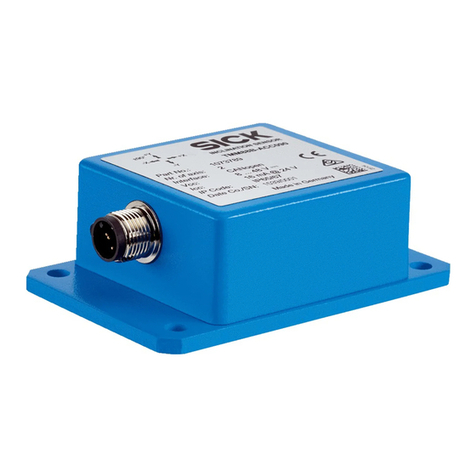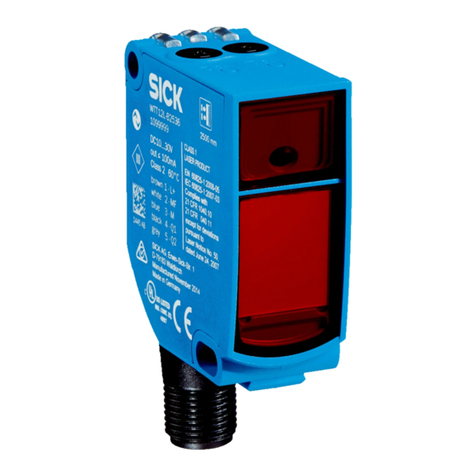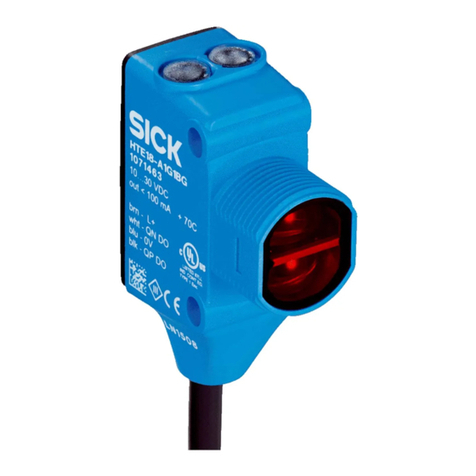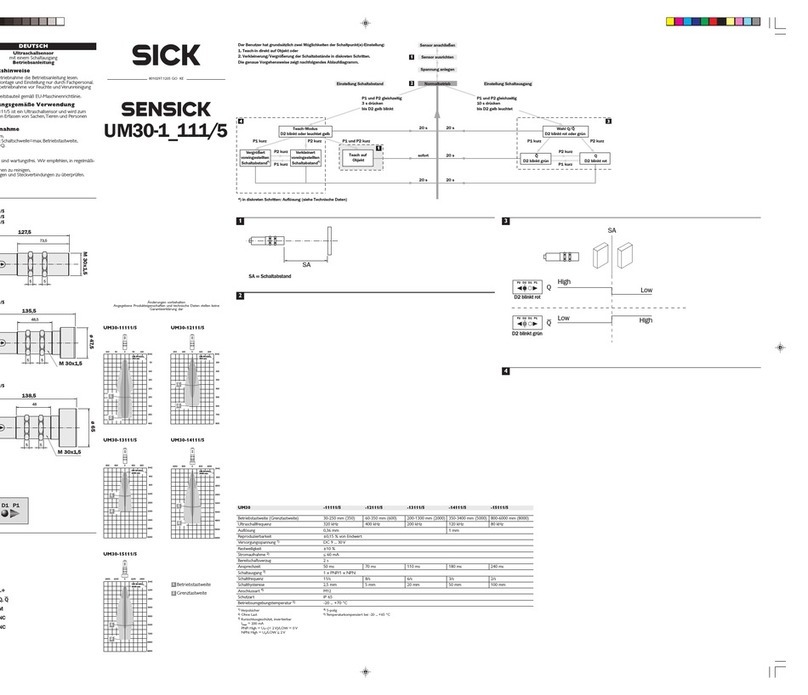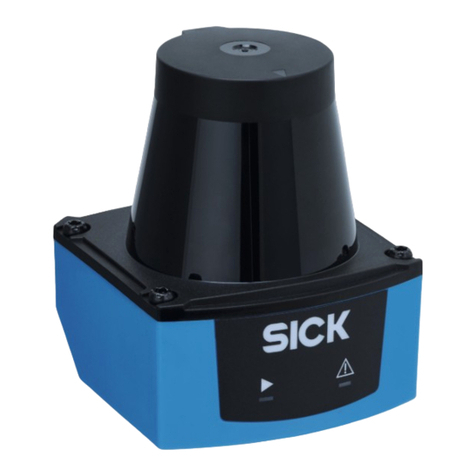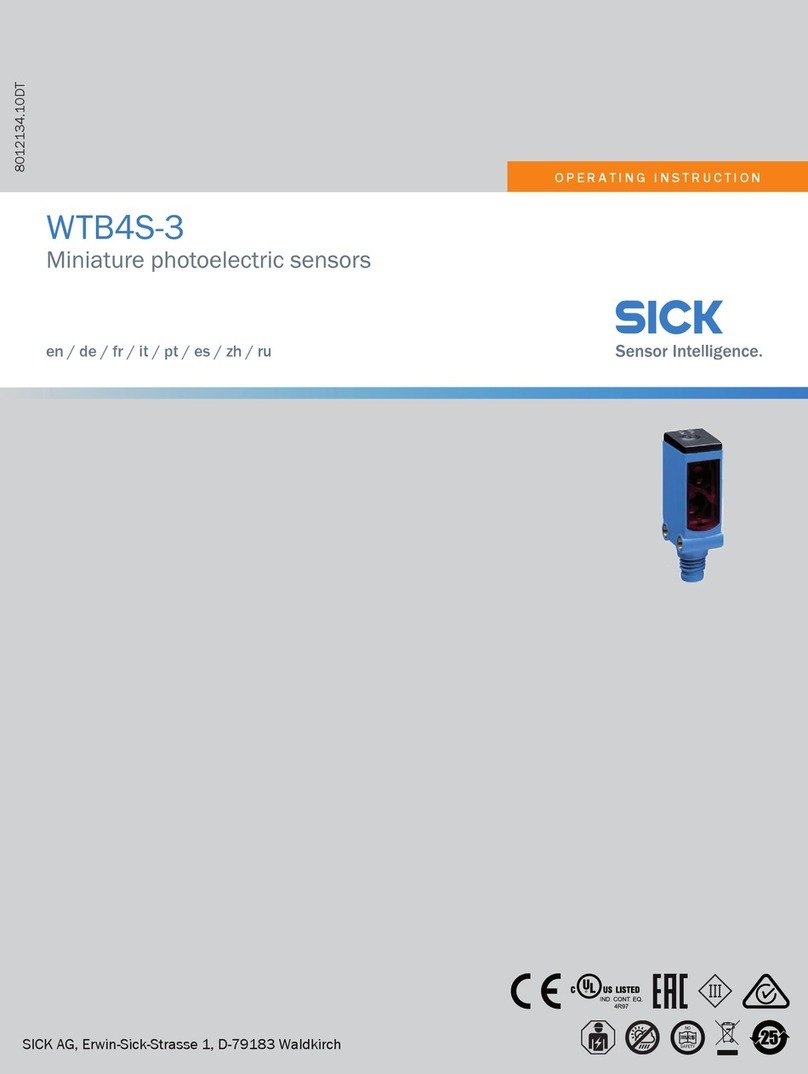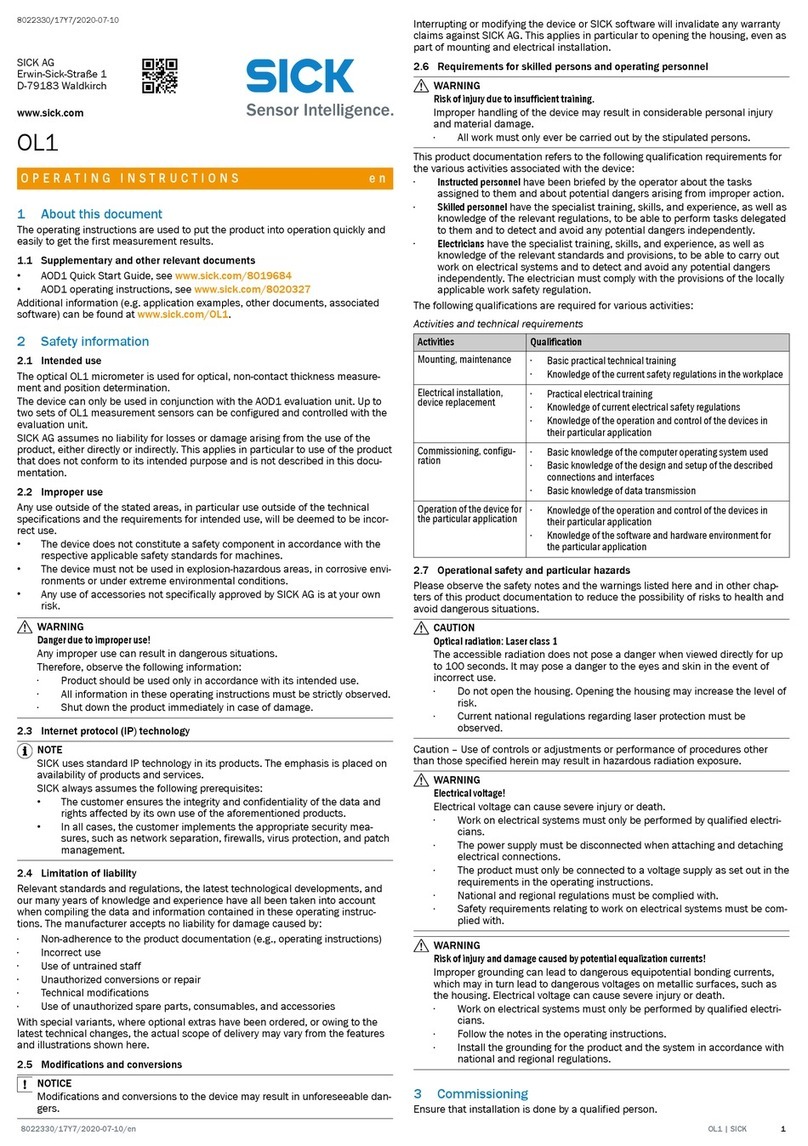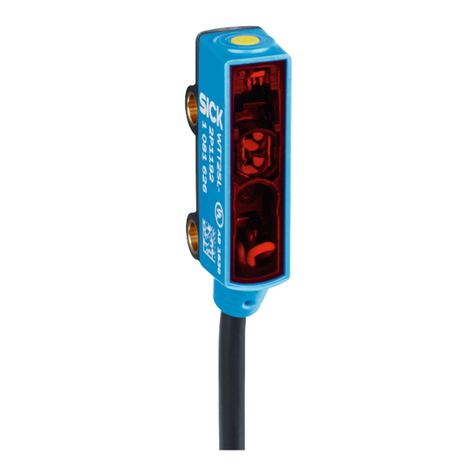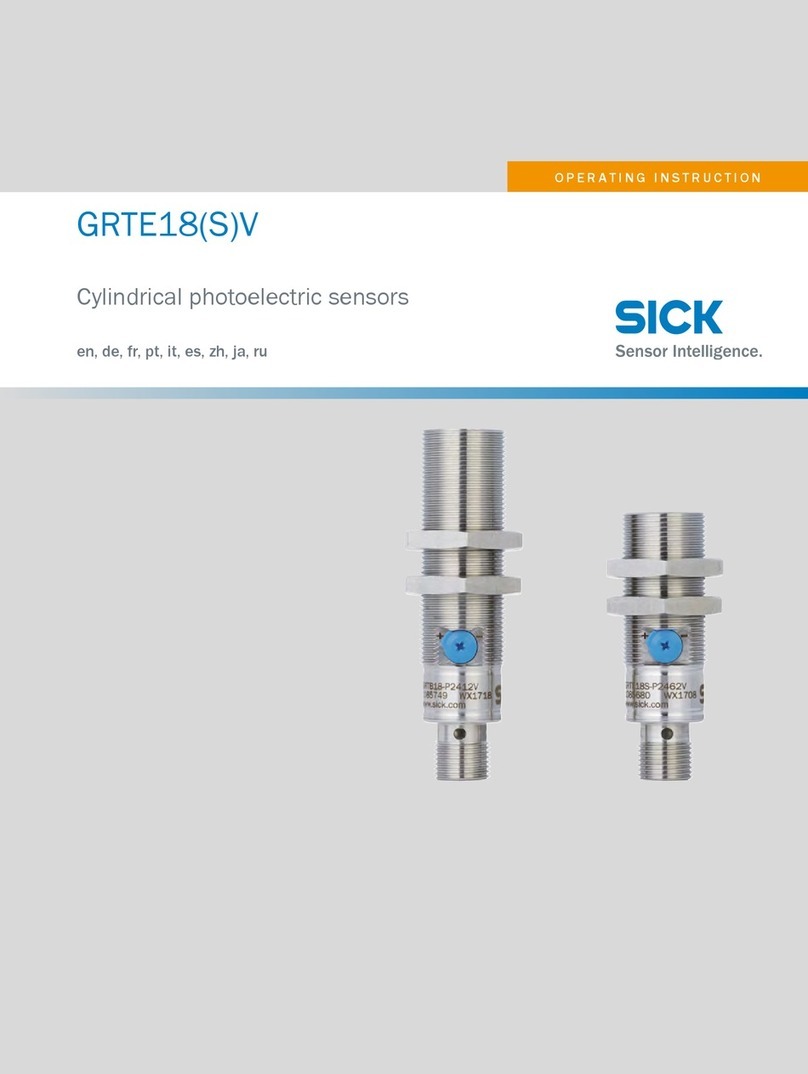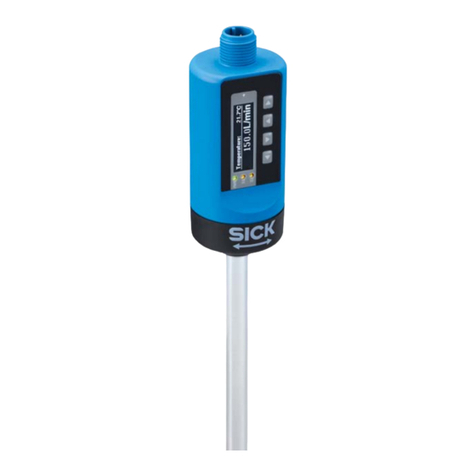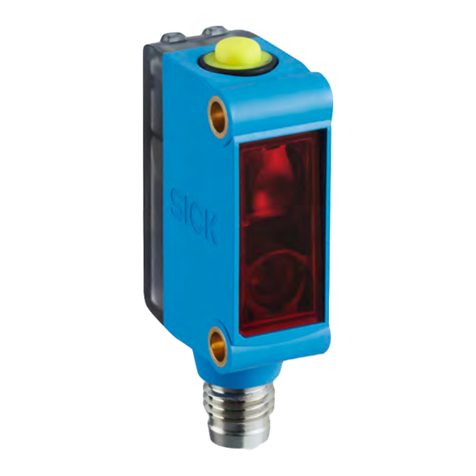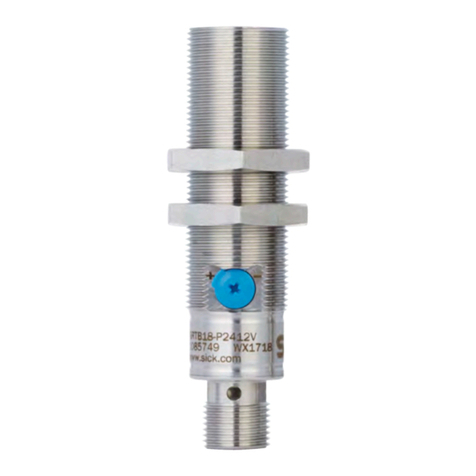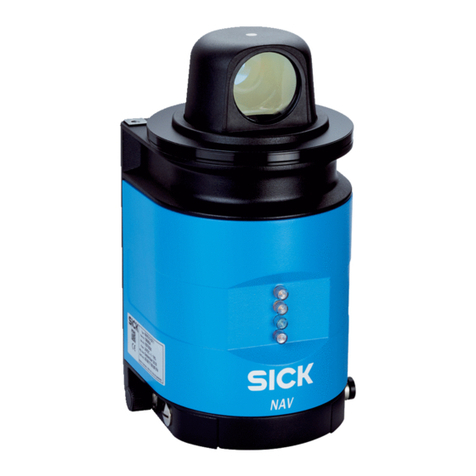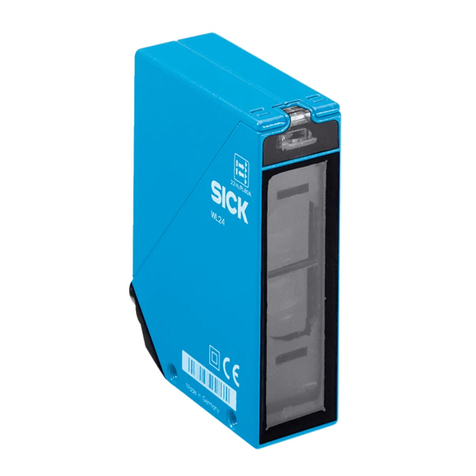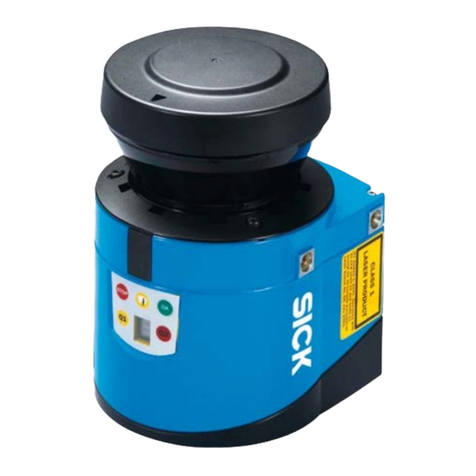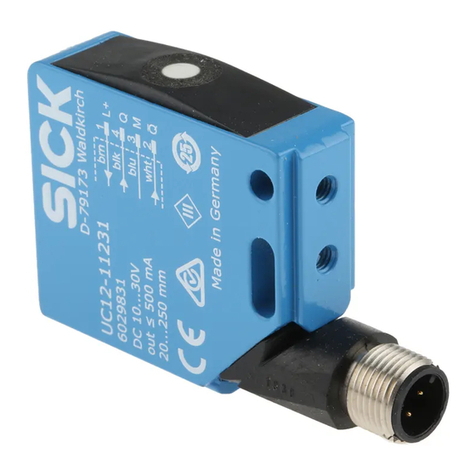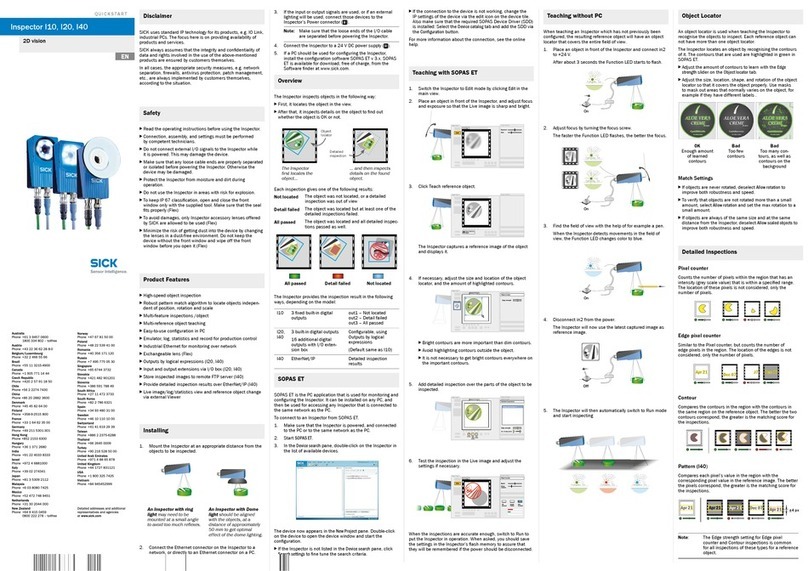
5.3 Mounting multiple devices....................................................................... 34
6 Electrical installation........................................................................ 36
6.1 Wiring instructions.................................................................................... 36
6.2 Prerequisites for safe operation of the device........................................ 37
6.3 Connection diagram................................................................................. 39
6.4 Connection options................................................................................... 41
6.5 Connecting the device electrically........................................................... 42
7 Operation............................................................................................ 43
7.1 Operation with SOPAS ET......................................................................... 43
7.2 Operation with teach-in............................................................................ 48
8 Maintenance...................................................................................... 49
8.1 Maintenance plan..................................................................................... 49
8.2 Cleaning..................................................................................................... 49
9 Troubleshooting................................................................................. 50
9.1 General faults, warnings, and errors....................................................... 50
9.2 Repairs...................................................................................................... 50
9.3 Returns...................................................................................................... 50
9.4 Disposal..................................................................................................... 50
10 Technical data.................................................................................... 51
10.1 Features.................................................................................................... 51
10.2 Mechanics/electronics............................................................................. 53
10.3 Dimensional drawing................................................................................ 54
10.4 Performance............................................................................................. 55
10.5 Interfaces.................................................................................................. 55
10.6 Ambient data............................................................................................. 55
11 Accessories........................................................................................ 56
12 Annex.................................................................................................. 57
12.1 EU declaration of conformity/Certificates............................................... 57
12.2 Licenses.................................................................................................... 57
12.3 Cybersecurity............................................................................................ 57
12.4 Configuration without computer.............................................................. 57
12.4.1 Field evaluation........................................................................ 57
12.5 Configuration with computer.................................................................... 58
12.5.1 Output of measured values via terminal program................. 58
12.5.2 Measured value display and configuration via start window 60
12.5.3 Selecting the application......................................................... 61
12.5.4 Field evaluation........................................................................ 61
12.5.5 Configuring interfaces............................................................. 62
12.5.6 Some useful functions............................................................. 62
12.5.7 Configuring the device............................................................. 62
CONTENTS
4O P E R A T I N G I N S T R U C T I O N S | MRS1000 8020494/1AZF/2021-05-10 | SICK
Subject to change without notice

